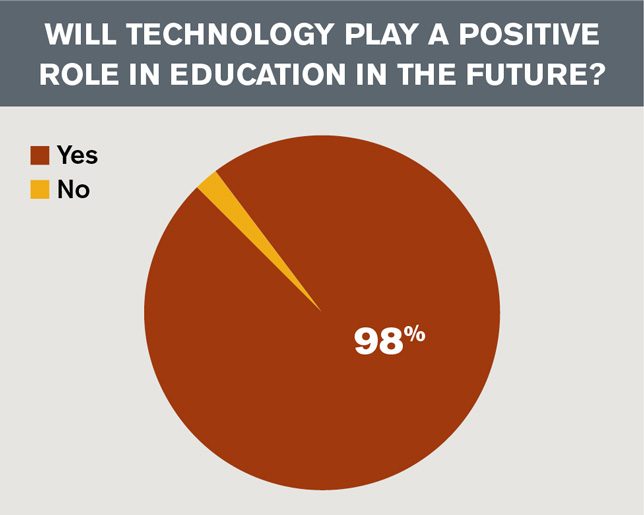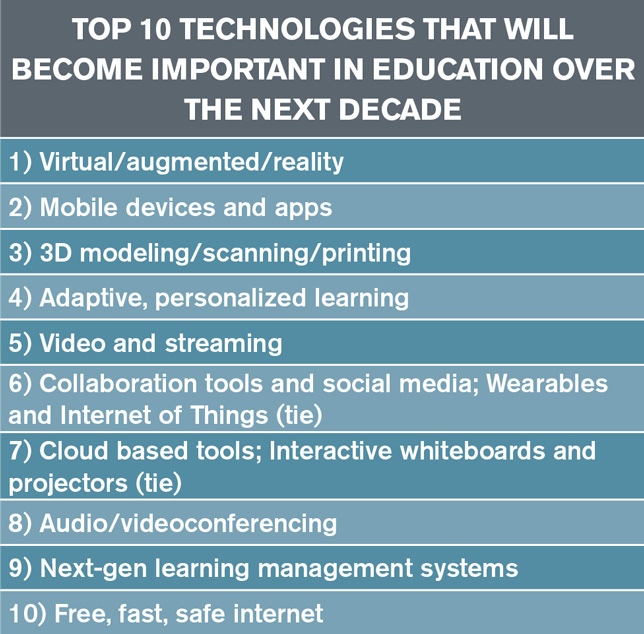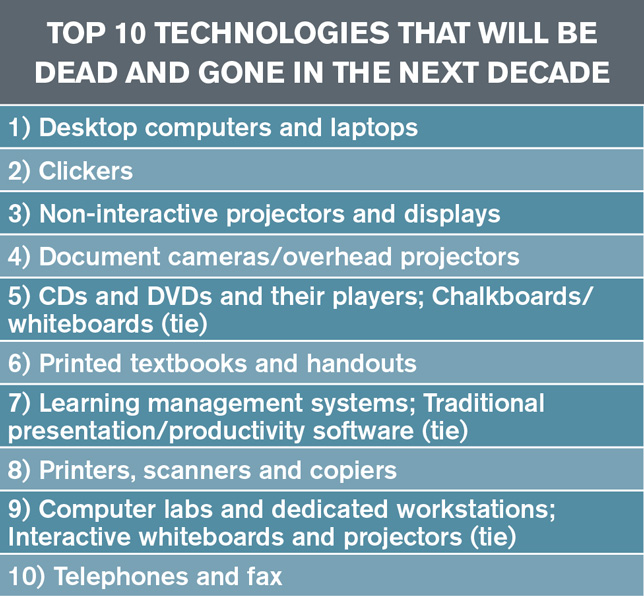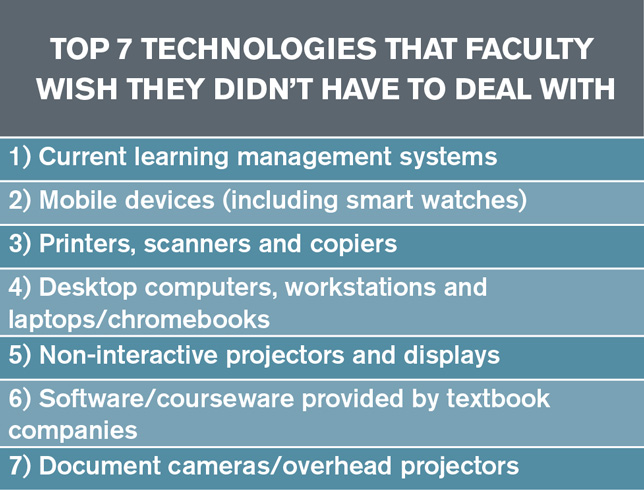Searching for "penn state"
The Still-Evolving Future of University Credentials
https://www.edsurge.com/news/2021-12-21-the-still-evolving-future-of-university-credentials
Sean Gallagher is founder and executive director of Northeastern University’s Center for the Future of Higher Education and Talent Strategy, and executive professor of educational policy.
The growth of educational platform companies such as Coursera and 2U is being driven in part by a surge in demand for certificate programs and “alternative credential” offerings. The number of open badges awarded nearly doubled from 24 million in 2018 to 43 million in 2020. And major companies and industry groups are increasingly getting into the credentialing game, exemplified by firms such as IBM and Google. Strada Education Network’s consumer polling has shown that 40 percent of working-age adults have earned some type of non-degree credential—and that non-degree credentials are at the top of the list for adults seeking education or retraining.
plenty of confusion or ignorance in the marketplace about the basic differences between “certificates” and “certifications.”
skills-based hiring
badging, embedding certificates into degrees and the idea of offering small credentials on the way to a larger one are emerging as key trends
The future will likely see a continued de-emphasis on merely requiring that prospective employees hold college degrees.
the needs of the job market are changing faster than ever, meaning a greater need for upskilling
a new national survey of C-suite executives that we recently conducted, 70 percent said that U.S. workers should be worried about their skills becoming outdated over the next few years.
Innovations such as stackable non-degree credentials as an on-ramp and low-cost MOOC-based degrees from top universities are likely to only grow access to post-baccalaureate education. The number of MOOC-based degrees is approaching 100
Online education services companies – or “OPMs” as many refer to them, have continued to play a major role in the scaling of online higher education, within, and now increasingly beyond the U.S.
the Lumina-sponsored Connecting Credentials campaign; the launch of the Non-Degree Credentials Research Network; the development of UPCEA’s Hallmarks of Excellence in Credential Innovation,
CMI5: A Call to Action
Robert “Bob” Bilyk Robert “Bob” Bilyk
https://lodestarlearn-wordpress-com.cdn.ampproject.org/c/s/lodestarlearn.wordpress.com/2021/10/29/cmi5-a-call-to-action/amp/
SCORM still remains the standard for how we describe, package, and report on eLearning.
CMI5 can generate a statement on virtually any kind of learner experience as well as the traditional data elements such as score, time on task, quiz questions and student answers. In this sense, CMI5 supports both openness and structure.
With CMI5, you can place a learning activity in a repository, in GitHub, on a web server, in a Site44 drop box site, in SharePoint, in a distributed network, wherever….without restricting its ability to connect with a learning management system. CMI5 content does not need to be imported. A CMI5 package can contain as little as one XML file, which among other things, tells the LMS where to find the content.
For Penn Medicine cancer patients, virtual reality is a game-changer and gateway into mindfulness
https://www-phillyvoice-com.cdn.ampproject.org/c/s/www.phillyvoice.com/penn-medicine-department-radiation-oncology-cancer-virtual-reality-mindfulness-05999-108/amp/
the department had implemented a relaxation VR program in its waiting room
+++++++++++++++++
More on virtual reality and mindfulness in this blog
https://blog.stcloudstate.edu/ims?s=Virtual+reality+mindfulness
https://docs.google.com/document/d/1xfRltGDkUvF6q57dEHDjiJce8yU3OfVNUNvt_rLAVrs/mobilebasic
44th Annual POD Network Conference/ Pittsburgh, Pennsylvania, November 13-17, 2019
++++++++++++
more on POD network in this IMS blog
https://blog.stcloudstate.edu/ims?s=pod+network
Building Resilience
Martin E.P. Seligman FROM THE APRIL 2011 ISSUE
https://hbr.org/2011/04/building-resilience
Penn Resiliency Program, under the direction of Karen Reivich and Jane Gillham, of the University of Pennsylvania, for young adults and children.
A team led by the University of Michigan professor Christopher Peterson, author of the Values in Action signature strengths survey, created the test, called the Global Assessment Tool (GAT). It is a 20-minute questionnaire that focuses on strengths rather than weaknesses and is designed to measure four things: emotional, family, social, and spiritual fitness. All four have been credited with reducing depression and anxiety. According to research, they are the keys to PERMA.
https://www.researchgate.net/publication/51067861_Building_resilience
++++++++++
more on mindfulness in this IMS blog
https://blog.stcloudstate.edu/ims?s=mindfulness
Washington district latest to eliminate librarians
Amelia Harper April 18, 2019
https://www.educationdive.com/news/washington-district-latest-to-eliminate-librarians/552914/
As school districts prioritize their budget needs for the coming year, there is a temptation to cut school librarian positions or reduce them to part-time status as some school districts are doing. The decision in SPS also comes as President Donald Trump, for a third time, has proposed to cut federal funding for the Institute for Museum and Library Services, which provides grants to both public and school libraries.
Research supports the impact that school librarians make on academic achievement, especially with regard to reading and writing scores. For instance, a Pennsylvania study cited in the Spokesman-Review article notes that 1.6% fewer students tested at the below basic level in reading when they had access to full-time librarians. The difference was even greater for minority students and those with disabilities, averaging at about a 5% improvement for those populations. Other research also supports the academic benefit of school librarians and demonstrates how they contribute to learning gains.
But modern school librarians offer so much more. They also teach digital literacy and digital citizenship in a day of easy access to misleading information and fake news. Many oversee makerspaces in libraries and learning centers that have been updated to meet a host of student needs. And they support teachers and administrators by researching information, helping with lesson plans, culling websites to create links that provide the most relevant information, and assisting with technology needs.
++++++++++
more on school librarians in this IMS blog
https://blog.stcloudstate.edu/ims?s=school+librarian
Open Educational Resources: What We Don’t Know
Regan A. R. Gurung November 14, 2018
https://www.insidehighered.com/digital-learning/views/2018/11/14/what-we-dont-yet-know-about-open-educational-resources-opinion
One of the first reviews of OER efficacy tests included 16 studies (Hilton, 2016). The abstract stated that “ … students generally achieve the same learning outcomes when OER are utilized.”
All nine studies had major confounds such as method of instruction (e.g., comparing OER sections that were taught online or blended versus traditional texts used in a face-to-face class). Some studies switched exams between comparisons and some changed course design (e.g., went to a flipped model). Most study authors acknowledged that the type of textbook was not the only factor that changed.
There is promise in the use of OERs. Beyond the “as good as” findings, some studies suggest they could be beneficial. Jhangiani, Dastur, LeGrand and Penner (2018) found students using print OERs (versus digital) did better on one of three exams tested (no differences on the other two, still good news). Is the promise of OER fulfilled? There is not enough to know yet. We have to be tighter in how we assess the efficacy of such materials in particular and higher education innovation in general.
Methodological challenges abound in classroom research on teaching, as learning is complex. Many challenges can be overcome with strong research design. There are benchmarks for conducting research on teaching and learning (Felton, 2013; Wilson-Doenges and Gurung, 2013), and it would be prudent for more educational researchers to use them.
+++++++++++
more on OER in this IMS blog
https://blog.stcloudstate.edu/ims?s=oer
5 SECRETS TO DEVELOPING A HIGH-PERFORMING TEAM IN HIGHER EDUCATION
Patrick Sanaghan & Jillian Lohndorf
https://www.academia.edu/8335887/Ways_to_Improve_Teams_in_Higher_Education
6 POTENTIALLY DESTRUCTIVE MYTHS
#1: THE MYTH ABOUT TALENT
A variety of skills, experiences,and perspectives are necessary,along with high levels of trust, open communication, emotional support, and mutual accountability—all of which arevery hard to establish and maintain. One differentiator of an exceptional team is a high level of curiosity where questions(not hidden criticisms) are prized.
#2: THE MYTH ABOUT FOCUS
stellar teams allocate their time in an unexpected way. They spend two-thirds of their time on thetask at hand (gettin’ ‘er done) and a full one-third on the “process” or relational aspect of the team’s functioning
#3: THE MYTH ABOUT CONFLICT
Exceptional teams see conflict as a resource, not something to be avoided.
Leaders need both the skill and the courage to deal with conflict on their team, as well as the understanding that everyone on the team needs to be involved in its resolution.
#4: THE MYTH ABOUT OPENNESS
- the “ seduction of the leader ” syndrome frequently seen in higher education. Due to the “collegial” and polite nature of most campuses, people simply don’t feel comfortable providing honest feedback,especially if it is negative or critical.
- Many people are reluctant to be honest, because it might hurt someone’s feelings.
- People don’t want to “lose their seat at the table” and fear that they risk doing so if they are truly honest.
- People realize that the leader really isn’t open to honest feedback, even as the leader professes to want it
#5: THE MYTH ABOUT SAMENESS
One of the pervasive team dynamics that every team leader needs to be aware of is
“comfortable cloning.”
This happens when we select people to be on our teams who have similar backgrounds to ours.
#6: THE MYTH ABOUT MOTIVATIONAL METAPHORS
One of the best ways to build a realteam is to have each team membershare their own metaphor for how theywould like the team to operate.
5 STRATEGIES FOR DEVELOPING A STELLAR TEAM
1. Make your team a learning team, by creating an internal article or book club.
2. Define the rules for decision making.
3. Create working agreements or“ground rules” for the functioning and support of the team.
4. Establish a mechanism for regular, anonymous evaluation of team meetings.
5. Conduct a leadership “audit.”
++++++++++++++++++++++
more on leadership in higher ed in this IMS blog:
https://blog.stcloudstate.edu/ims?s=ed+leader
Kelly, B. R., & 10/11/17. (n.d.). Faculty Predict Virtual/Augmented/Mixed Reality Will Be Key to Ed Tech in 10 Years -. Retrieved October 31, 2018, from https://campustechnology.com/articles/2017/10/11/faculty-predict-virtual-augmented-mixed-reality-will-be-key-to-ed-tech-in-10-years.aspx




Our survey polled 232 faculty members across the country about their use of technology in the classroom, their likes and dislikes, their predictions for the future and more. The majority of respondents (68 percent) come from public institutions, with 28 percent from private nonprofits and 4 percent working at for-profit schools. Seventy-two percent work at four-year colleges or universities; 26 percent are at community colleges (the remaining 2 percent designated their institutional level as “other”).
Respondents represent institutions of a range of sizes, with about one-third (32 percent) working in colleges or universities with 2,500 to 9,999 students. Just under half (45 percent) of respondents are from institutions with 10,000 students or more.
Our respondents are veterans of higher education: The largest group (47 percent) has more than 20 years of experience, with 81 percent logging at least 11 years in the field.
The top three most common school and college types among our respondents are education (22 percent), business/business administration (17 percent) and liberal arts (12 percent). But overall, respondents work in a wide range of disciplines, from engineering and medicine to humanities and fine arts. The top 10 states with the most survey respondents are New York, Texas, California, Florida, Georgia, Virginia, Illinois, Missouri, Pennsylvania and Massachusetts.
++++++++++++++++
More about XR in this IMS blog:
Vine, R. (2018). Realigning liaison with university priorities: Observations from ARL Liaison Institutes 2015–18.
College & Research Libraries News,
70(9).
https://doi.org/10.5860/crln.79.8.420
Rita Vine is head of faculty and student engagement at the University of Toronto Libraries, email:
rita.vine@utoronto.ca. In 2017–18, she was visiting program officer for the Reimaging Library Liaison initiative at the Association of Research Libraries.
The overarching goal of the institutes is to acknowledge a library’s primary traditional services (instruction, collections, reference) while challenging conventional thinking about what is needed for the future and how best to provide it. Exercises are designed to help librarians move from “what’s in it for the library” to “what’s in it for the university.”
Top ten observations
1. Liaison librarians would benefit from greater exposure to institutional research priorities at their university.
2. Liaisons find it easiest to engage in classroom support and access library resources. Research engagement is harder. Moving into new areas of engagement is challenging when faculty continue to see librarians as buyers of content or helpers of students.5 Liaisons experience little pressure from individual faculty to venture into new areas that have not been typically associated with libraries. If asked to engage in new areas, some liaisons find it intimidating to step outside of familiar roles to probe and advocate for new capabilities and services that faculty may not be ready to discuss, or which liaisons may not yet fully understand.
3. Liaisons are both eager and anxious about shifting their roles from service to engagement. Anxiety manifests itself in feeling inexpert or untrained in technical areas.
The need for training in many different and complex technical skills, like data numeracy, publishing practices, and research data management,
4. Many liaisons’ professional identity and value system revolves around disciplinarity, service, and openness, and less around outreach and impact.
5. Some liaisons see outreach and engagement as equivalent to advocacy, library “flag-waving,” and sometimes “not my job.” My note: as in “library degree is no less better the Ph.D., it is like a physicians degree.”
6. Finding time, space, and motivation to undertake deeper outreach is daunting to many liaisons. Liaisons were very reluctant to identify any current activities that could be terminated or reimagined in order to make time for new forms of engagement. Particularly in institutions where librarians enjoy faculty status, finding time to engage in personal research concerned liaisons more than finding time for outreach.
7. Liaisons want to deepen their relationships with faculty, but are unclear about ways to do this beyond sending an email and waiting.
8. Many liaisons are unclear about how their work intersects with that of functional specialists, and may need prompting to see opportunities for collaboration with them.
9. While liaisons place considerable value on traditional library services, they have difficulty articulating the value of those services when they put themselves in the shoes of their users. Groups struggled to find value in aspects of traditional services, but had little appetite for serious reconsideration of services that may have lost all or most of their value relative to the time and energy expended to deliver them.
10. For liaisons, teaming with others raises concerns about how teamwork translates into merit, promotion, and other tangible rewards. Liaisons wonder how the need for increased teaming and collaboration will impact their reward structure. My note: I read between the lines of this particular point: it is up to the administrator to become a leader!!! A leader can alleviate such individualistic concerns and raise the individuals to a team.
three recommendations for research libraries to consider to help their workforce move to a robust engagement and impact model.
- Foster more frequent and deeper communication between librarians and faculty to understand their research and teaching challenges. Many liaisons will not take even modest communications risks, such as engaging in conversations with faculty in areas where they feel inexpert, without strong but supportive management interventions (as per my note above).
- Find ways to help librarians use internal teaming and collaborations to solve university challenges. My note: Chris Kvaal, thank you for introducing me to the “hundred squirrels in one room” allegory. To find way to help librarians use internal teaming, librarians must be open to the mere idea of teaming.
- Increase liaison activity with non-departmentalized units on campus, which are often drivers of institutional initiatives and university priorities. Units such as institutional research services, teaching centers, and senior university offices can connect the library to high-level institutional projects and provide opportunities to engage more liaisons and functional specialists in these areas.
+++++++++++
more on blended librarian in this IMS blog
https://blog.stcloudstate.edu/ims?s=blended+librarian
more on embedded librarian in this IMS blog
https://blog.stcloudstate.edu/ims?s=embedded+librarian



